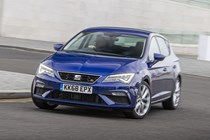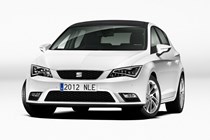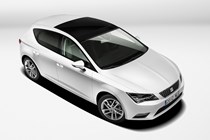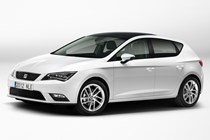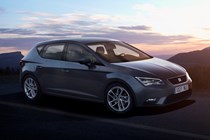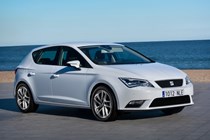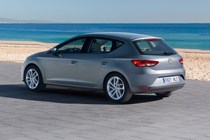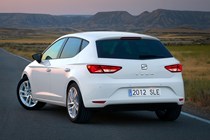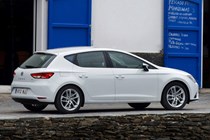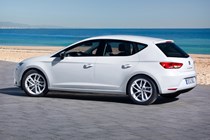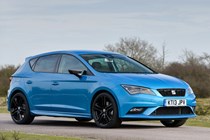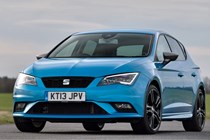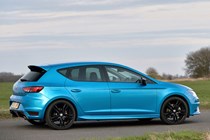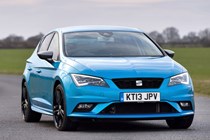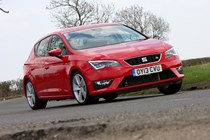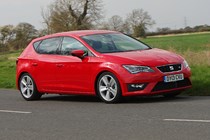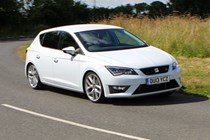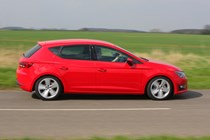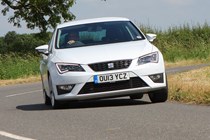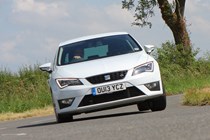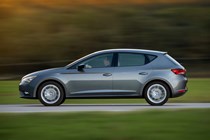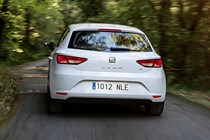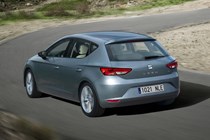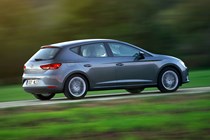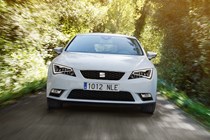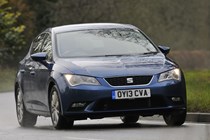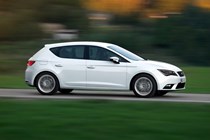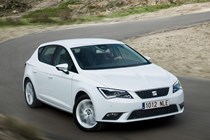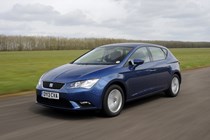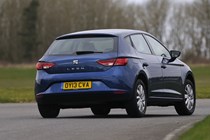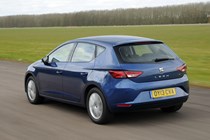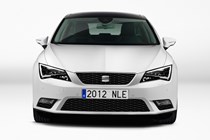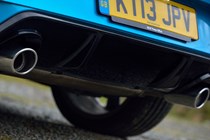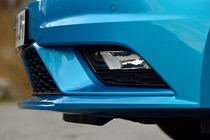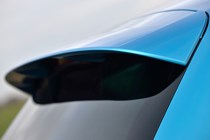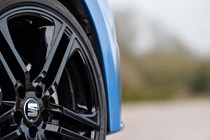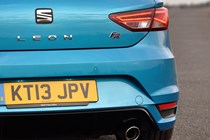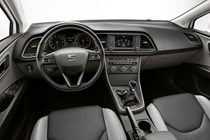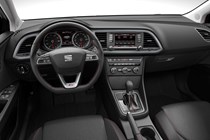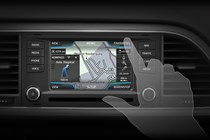
SEAT Leon Hatchback (2013-2020) interior, tech and comfort
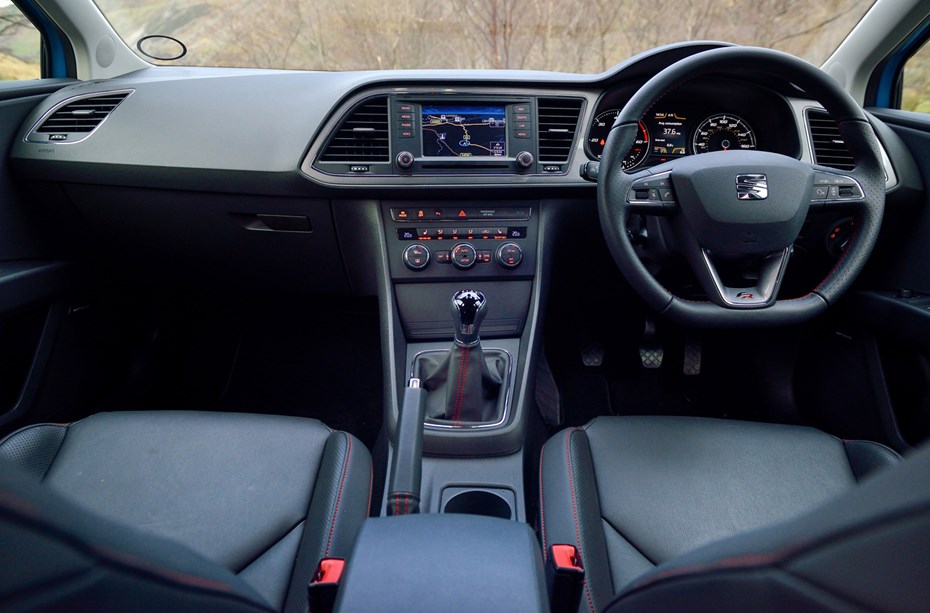
- Dated, but logically laid-out interior
- Spacious cabin with comfortable seats
- Good all-round visibility
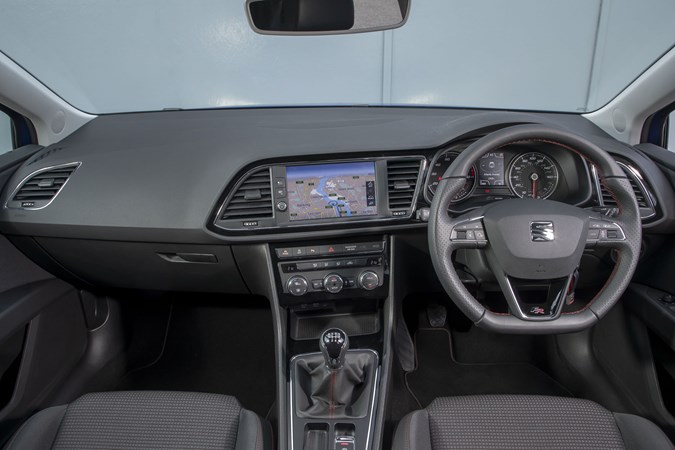
While it’s true that the Leon’s interior might be feeling a little dated against newer rivals, there’s still a lot to be said for its simple design and logical layout. From the clear, easy-to-understand dials and switches to the ample passenger space, it’s still right up there with newer rivals – such as the Kia Ceed, Ford Focus and Skoda Scala – for outright user-friendliness.
The driving position is good – you sit quite low in the car, but everything falls easily to hand. SEAT can thank Volkswagen for this and the simple controls borrowed from the excellent Golf. The view out is good too, and while the pillars are quite steeply sloped, there’s a large amount of glass to aid visibility, while the angular mirrors are well placed.
Also worth nothing is that post 2017 facelift SEAT Leon models saw a change to the design of the infotainment setup. Whereas older models had a number of shortcut models surrounding the screen, later cars replaced this with a less cluttered but ultimately harder to use two-button design. Once you get used to the system it’s unlikely to be too much of an issue – especially if you use Apple CarPlay or Android Auto, but it’s frustrating that a slight backwards step was made.
The sat-nav in our long-term Leon began to annoy us – find out why here
What’s more useful is the way the screen and centre console is angled ever so slightly towards the driver, making everything easy to reach and operate on the move, and the screen is located nice and high on the dashboard.
The enormous rear pillars make things quite dark in the back seat, though on the plus side the middle seat is particularly comfortable with an unusual amount of back support and lots of headroom, though the large transmission tunnel reduces footroom. The front seats, meanwhile, are comfortable and fairly well bolstered although some drivers may wish for a little more side support.
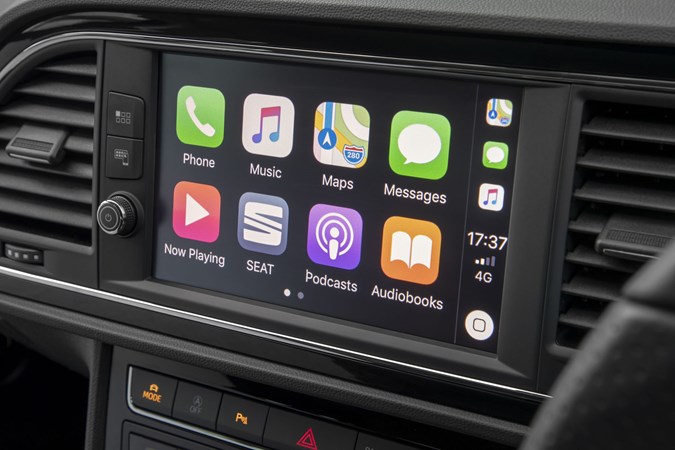
Reduced number of accessories on the SEAT Leon
When it was originally launched, the SEAT Leon was available with a large number of optional extras to supplement the standard spec. Now however, SEAT has changed the way it specs its cars so that almost all of the equipment is standard on at least one trim level. For example, adaptive cruise control isn’t available as an option, but is standard on Xcellence, Xcellence Lux and Cupra Lux models. On the one hand, this does make the process of buying a Leon simpler. However, some customers may bemoan the lack of flexibility this creates if they like to pick and choose.
How comfortable is it?
- Seats are supportive and comfortable
- But the suspension is firm on some models
- Some wind and road noise too
Comfort levels are reasonably high thanks to comfy seats and greater interior space, though the sportier FR suspension can feel overly firm and jarring on rougher roads – especially when paired with large alloy wheels. Conversely, Cupra 290 models running with standard-fit adaptive suspension are able to deal with these imperfections much more successfully. However, the seats on sportier FR models are nicely supportive with useful bolsters to keep you in place, and there’s a good amount of support for your legs.
Higher-end Xcellence cars can come with Alcantara or leather, boosting the luxurious and comfortable feel.
On the negative side, refinement isn’t quite as good as it is in a Mazda 3 or Kia Ceed. There is quite a lot of diesel clatter when pulling away in 1.6-litre TDI models but once up to speed this mostly fades away, while the angular wing mirrors do create a bit of wind noise at motorway speed and this is much more irritating than the refinement of the engines when cruising. Finally, larger-wheeled models can also kick up some noise, but overall none of this is ever overly-intrusive.


